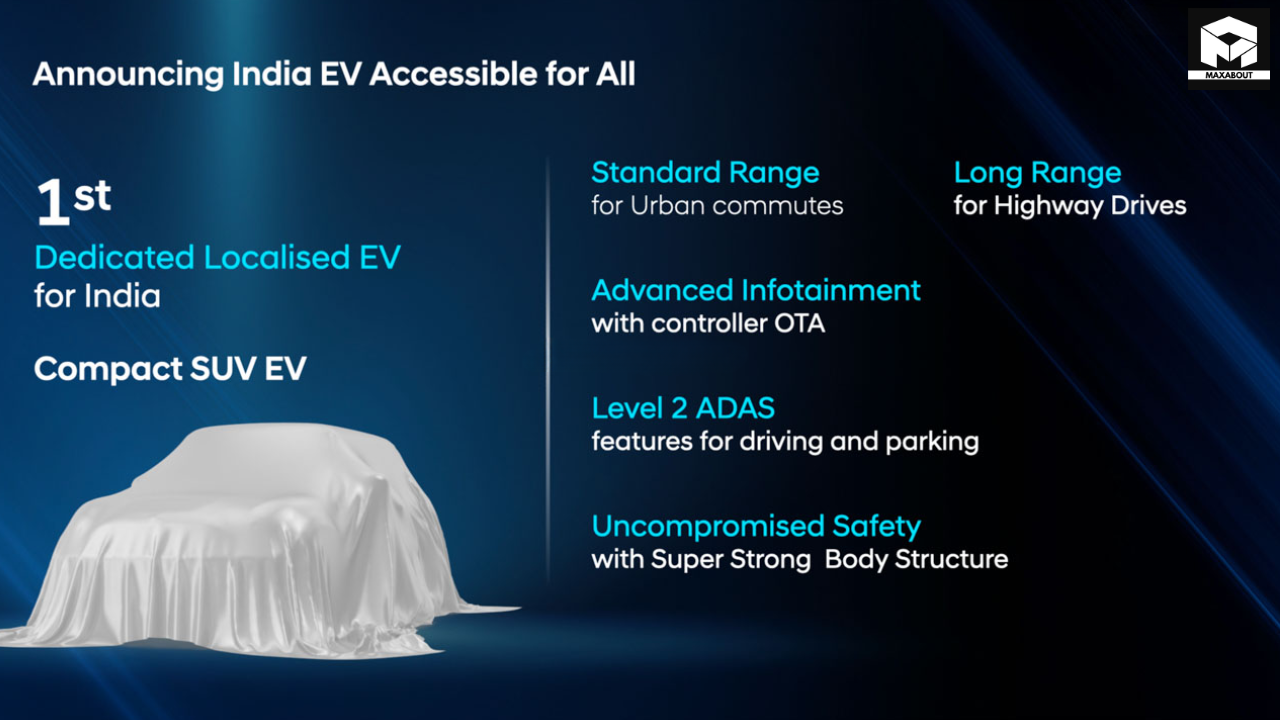Introduction
The electric vehicle race in India is heating up significantly. In what could be a game-changing move, Hyundai has confirmed it's working on an affordable electric vehicle that will be positioned below the upcoming Creta Electric. This new compact EV is clearly aimed at taking on the current segment leader, Tata's Nexon EV.
As someone who closely follows automotive industry developments, I can tell you this announcement represents a significant shift in Hyundai's electric vehicle strategy for the Indian market. Until now, most legacy automakers have focused on premium segments for their initial EV offerings, but this move signals Hyundai's intention to compete in the mass-market segment where adoption rates could potentially be much higher.
Hyundai's New EV Strategy for India

Hyundai's EV roadmap for India is becoming increasingly clear. According to Unsoo Kim, MD of Hyundai Motor India, the company plans to launch a total of six electric vehicles in India by 2030. The Creta Electric will be positioned as a mid-range offering, while this newly confirmed compact EV will target the more price-sensitive segment.
Industry reports suggest that Hyundai is taking a multi-pronged approach:
- Developing India-specific electric vehicles
- Creating a range of options across different price points
- Building local manufacturing capabilities for EVs
- Establishing charging infrastructure partnerships
The strategy makes sense when you consider the current market dynamics. While premium EVs have garnered attention, the real volume potential lies in more affordable segments – exactly where Tata has established dominance with the Nexon EV.
Anticipated Specifications and Platform
While detailed specifications haven't been officially revealed, automotive industry analysts project this new affordable Hyundai EV will likely:
- Be built on a modified version of the company's K1 platform
- Feature battery capacity in the 30-40 kWh range
- Offer approximately 300-350 km of range per charge
- Include fast charging capabilities
- Incorporate smart connectivity features
Based on Hyundai's current technology portfolio, we can expect this vehicle to feature the company's efficient electric powertrain technology, possibly adapted from their global EV platforms but optimized for Indian conditions and price points.
Market Positioning and Price Expectations
The pricing strategy for this new EV will be crucial for Hyundai's success in this segment. The Tata Nexon EV currently dominates the affordable electric SUV market with its starting price of around ₹14-15 lakh (ex-showroom).
To be truly competitive, Hyundai would need to position their compact EV in a similar price bracket. Industry observations suggest the company might target a price range between ₹12-16 lakh, depending on variants and battery configurations.
Competitive Landscape
The compact EV segment in India is becoming increasingly competitive:
- Tata Nexon EV: The current market leader with established presence
- MG ZS EV: Positioned slightly above in terms of pricing
- Mahindra XUV400: Another strong contender in this space
- Upcoming Maruti-Toyota EVs: Expected to enter this segment soon
What might set Hyundai apart is the company's reputation for offering feature-rich vehicles with polished designs. If they can combine this with competitive pricing and adequate range, they could potentially disrupt Tata's dominance in this segment.
Expected Timeline and Production Plans

According to company statements and industry reports, Hyundai's affordable EV is likely to hit the market after the launch of the Creta Electric, which is expected in late 2024. This would place the compact EV's launch sometime in 2025.
The production strategy appears to involve:
- Manufacturing at Hyundai's Chennai facility
- Gradual localization of components to control costs
- Potential exports to similar markets
The company seems to be taking a pragmatic approach by first establishing its EV presence with the Ioniq 5 (already launched) and the upcoming Creta Electric before venturing into the highly competitive mass-market segment.
Local Manufacturing and Government Incentives
Hyundai's ability to leverage government incentives under India's production-linked incentive (PLI) scheme for automobiles could play a crucial role in the pricing strategy. Local manufacturing would not only help the company qualify for these incentives but also potentially reduce the import duties on components.
The company appears to be working on increasing the localization levels for its EV components, which would be essential for achieving competitive pricing in this segment.
What This Means for Consumers
For Indian EV buyers, Hyundai's entry into the affordable EV space brings several potential benefits:
- More options in the affordable EV segment
- Potentially better feature sets and technology
- Increased competition leading to better value propositions
- Expansion of charging networks as more players invest
Based on Hyundai's track record with conventional vehicles, we can expect their affordable EV to offer good build quality, feature-rich interiors, and reliable performance. The company's established service network across India could also provide an advantage over newer EV entrants.
Frequently Asked Questions
When will Hyundai launch this affordable EV in India?
Based on current information, Hyundai's affordable EV positioned below the Creta Electric is expected to launch sometime in 2025, following the introduction of the Creta Electric in late 2024.
What will be the expected price range?
While official pricing hasn't been announced, industry analysis suggests the vehicle might be priced in the ₹12-16 lakh range to compete effectively with the Tata Nexon EV.
What kind of range can we expect from this new Hyundai EV?
Though specifications haven't been confirmed, industry experts anticipate a range of approximately 300-350 km per charge, which would be competitive in this segment.
Will it be manufactured in India?
Yes, reports indicate the vehicle will be manufactured at Hyundai's Chennai facility, with plans for increasing local component sourcing over time.
Conclusion
Hyundai's confirmation of an affordable EV positioned below the Creta Electric represents a significant development in India's evolving electric vehicle landscape. This strategic move to directly challenge the Tata Nexon EV indicates the company's serious commitment to establishing a strong presence across multiple EV segments in India.
As the electric revolution continues to gain momentum in India, consumers stand to benefit from increased competition, more choices, and potentially better technology at accessible price points. Hyundai's entry into this space could potentially accelerate EV adoption by bringing their reputation for quality and feature-rich vehicles to a more affordable price segment.
The next few years will be fascinating to watch as these new electric offerings hit the market and reshape consumer expectations about what an affordable EV can offer. For now, Hyundai's announcement gives us a clear indication that India's EV market is maturing rapidly, with legacy manufacturers now fully committed to the electric future.

